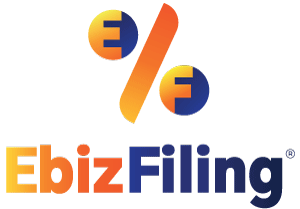
-
December 21, 2023
The Process to Draft and Pass the Board Resolution
Introduction
As an essential part of corporate governance, board resolutions are formal documents that detail decisions made by a board of directors. These decisions can range from significant changes in company policies to major financial transactions. Drafting and passing a board resolution requires careful attention to detail and adherence to the legal and ethical obligations of the board. In this, we will talk about: “How to draft or pass a board resolution of a company.
What is a Board Resolution?
A board resolution is a formal statement issued by a board of directors that outlines a decision made by the board. Board resolutions can be used to formalize any decisions that the board makes, including changes to company policy, approval of financial transactions, or approval of new projects.
How to Draft a Board Resolution?
The following is the process for drafting a board resolution:
-
Identify the Issue – The first step is to identify the issue that needs to be addressed. It could be anything from a change in policy to a significant financial transaction or a strategic decision.
-
Research and Preparation – After identifying the issue, it is essential to conduct thorough research on the topic. This could involve gathering relevant data, consulting with experts, or reviewing existing policies and procedures. You will also need to prepare any supporting documents, such as financial reports or legal opinions, that may be required.
-
Draft the Resolution – With the necessary information and research at hand, you can begin drafting the resolution. A board resolution should be clear, concise, and written in plain language. It should include a clear statement of the issue, the proposed action, and any relevant details or supporting information. It is also important to ensure that the resolution complies with any applicable laws or regulations.
-
Circulate the Draft – Once you have drafted the resolution, it should be circulated among the board members for review and comment. This will allow for any necessary revisions or amendments to be made before the resolution is presented for a vote.
Who Drafts the Board Resolution?
The drafting of a board resolution is generally the responsibility of the board secretary or legal counsel. The board secretary handles maintaining the board’s records, and as such, is well-positioned to ensure that the resolution is properly recorded and filed. Legal counsel may also be involved in drafting board resolutions, particularly if the resolution involves legal issues or compliance with regulations.
The drafting of the board resolution involves identifying the issue, conducting research and preparation, and drafting the resolution. The resolution should be clear, and concise, and comply with any applicable laws or regulations. The board secretary or legal counsel may seek input from other members of the board before finalizing the resolution.
How to Pass a Board Resolution?
The following is the process to pass a board resolution:
-
Call for a Vote – When the board is ready to vote on the resolution, the chairperson should call for a vote. A board resolution typically requires a majority vote to pass. The minutes of the meeting should reflect the outcome of the vote, including the names of those who voted for and against the resolution.
-
Record and File the Resolution – After the resolution has been passed, it should be recorded and filed with the company’s records. This will ensure that there is a clear record of the board’s decision and the steps taken to reach that decision.
Who Passes the Board Resolution?
The passing of the board resolution involves a vote by the board members. The chairperson of the board generally calls for a vote on the resolution after it has been presented for review and discussion. The board’s ordinary resolution requires a majority vote to pass, which means that more than half of the board members must vote in favor of the resolution for it to be passed.
The minutes of the meeting should reflect the outcome of the vote, including the names of those who voted for and against the resolution. After the resolution has been passed, it should be recorded and filed with the company’s records. This ensures that there is a clear record of the board’s decision and the steps taken to reach that decision.
Conclusion
In conclusion, drafting and passing a board resolution of a company requires careful planning, research, and adherence to legal and ethical obligations. A clear and concise resolution can provide a formal record of the board’s decision-making process and ensure that the organization is moving forward in the right direction. By following these steps, you can ensure that the board resolution is legally compliant, accurately reflects the board’s decision, and is properly recorded and filed.
ROC Annual Filing
Every Private Limited Company must file returns on an annual basis. Make your company ROC compliant.
About Ebizfiling -










Reviews
Akshay shinde
23 Apr 2019Excellent service…
Ateek Mohd
23 Apr 2022Ebizfiling India pvt ltd is leading account services provider across the country. They have a very good and genuine staff. They give all the services in given time frame. My two company’s accountability done by this firm. Awesome service ..!
Dev Desai
19 Nov 2021Loves their services
December 23, 2025 By Steffy A
Understanding US Corporate Bylaws for the Legal Market Introduction The term “corporate bylaws” often appears in legal dramas where a single clause shifts the outcome of a major corporate decision. While such moments seem dramatic on screen, they reflect how […]
December 18, 2025 By Dhruvi
How can mentors add value by simplifying legal jargon? To Begin with, At some point in every startup journey, legal words enter the room. Terms like shareholding, compliance, filings, agreements, approvals, or due diligence suddenly become part of everyday conversations. […]
December 18, 2025 By Steffy A
Why User Location Matters for OIDAR India? To Start With, User location plays a critical role in how India applies GST to digital services. When a fintech tool or online platform reaches an Indian user, GST law treats the user’s […]